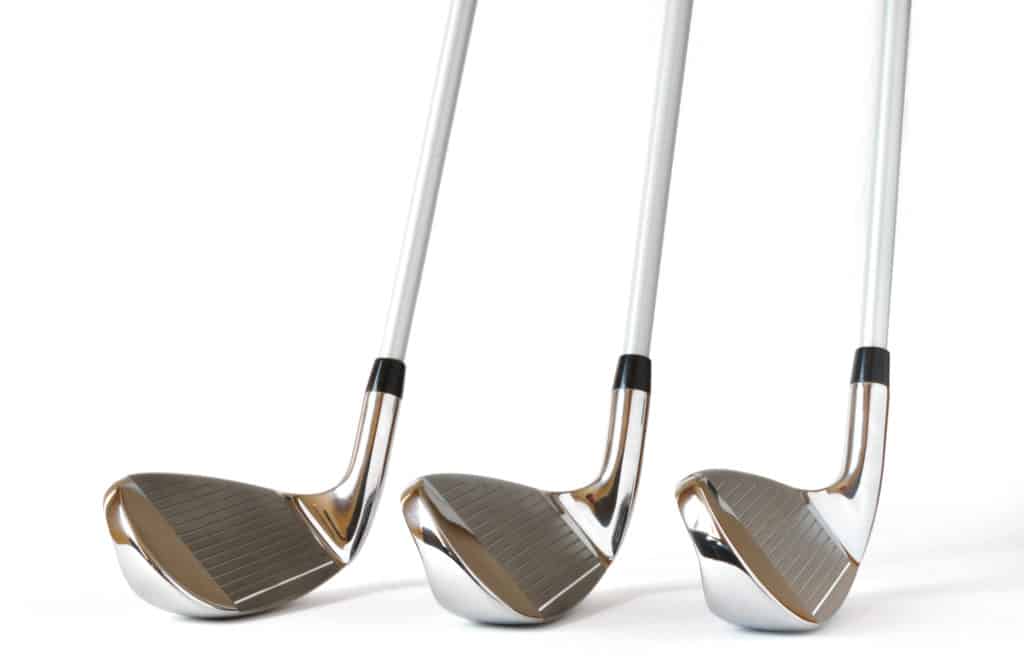What Degree Wedge Is Best For Chipping

Are you looking to improve your chipping game in golf? One key element to consider is selecting the right degree wedge for chipping. The degree of loft on your wedge plays a crucial role in determining the trajectory, distance, and control of your chip shots around the green. But with a wide range of wedge options available, how do you know which degree wedge is best for chipping?
In this comprehensive guide, we will explore the factors to consider when choosing the degree wedge for chipping and provide recommendations for different chipping scenarios. Whether you’re facing a standard chip shot, navigating tight lies, playing from bunkers, or attempting specialty shots, understanding the appropriate degree wedge can make a significant difference in your performance.
We’ll delve into the significance of wedge degrees and how they affect your chipping game. Additionally, we’ll discuss essential factors to consider when selecting the right degree wedge, such as distance control, green conditions, and shot trajectory. With this knowledge, you’ll be able to make informed decisions and optimize your chipping performance on the course.
So, if you’re ready to elevate your chipping skills and improve your short game, let’s dive into the world of wedge degrees and discover the best degree wedge for chipping in various scenarios.

Understanding the Basics of Wedge Degrees
Before we discuss the optimal degree wedge for chipping, let’s establish a clear understanding of wedge degrees and their significance in golf. Wedges are categorized based on their loft angles, which are measured in degrees. Commonly used wedges include pitching wedges (PW), gap wedges (GW), sand wedges (SW), and lob wedges (LW). Each of these wedges has a specific loft angle, and understanding their characteristics is essential for making informed decisions on the golf course.
The Role of Loft in Chipping
Loft is the angle between the face of the club and a vertical plane. In chipping, the loft of the wedge influences the trajectory of the ball and its ability to clear obstacles and stop on the green. A higher degree wedge will launch the ball higher with less roll, while a lower degree wedge will produce a lower trajectory with more roll. Finding the right balance between loft and roll is key to achieving consistency and accuracy in your chipping game.
Factors to Consider When Choosing the Degree Wedge for Chipping
Selecting the best degree wedge for chipping depends on various factors that can affect your shot outcome. Consider the following aspects to make an informed decision:
1. Distance Control
One of the primary considerations when choosing a degree wedge for chipping is distance control. Different degree wedges will produce different carry distances and rollouts. It’s important to assess your chipping distances and select a wedge that allows you to consistently control the distance of your chips.
2. Green Conditions
The condition of the greens can also influence your choice of degree wedge for chipping. Firm and fast greens may require a lower degree wedge to maximize roll and control, while softer and slower greens may benefit from a higher degree wedge to generate more height and stop the ball quickly.
3. Shot Trajectory
The desired trajectory of your chip shots is another factor to consider. A higher degree wedge will launch the ball higher and potentially provide more stopping power, while a lower degree wedge will produce a lower, more controlled trajectory. Assess the specific shot requirements and course conditions to determine the optimal trajectory for your chipping game.
Degree Wedge Recommendations for Different Scenarios
Now, let’s explore some degree wedge recommendations for different chipping scenarios. Keep in mind that these are general guidelines, and individual preferences and skill levels may vary.
1. Standard Chip Shot (10-20 Yards)
For standard chip shots within the range of 10 to 20 yards, a pitching wedge (PW) with a loft of around 48-50 degrees is often a suitable choice. This degree wedge provides a good balance of loft and roll, allowing for consistent distance control and accuracy.
2. Short Chips Around the Green (Under 10 Yards)
When facing short chip shots around the green, a higher degree wedge such as a gap wedge (GW) or sand wedge (SW) with a loft of around 52-56 degrees can be effective. The additional loft helps to lift the ball quickly and land softly, reducing the risk of overshooting the target.
3. High Trajectory Shots and Tight Lie Situations
In situations where you need to hit high trajectory shots or navigate tight lies, a lob wedge (LW) with a loft of around 58-60 degrees can be advantageous. The extra loft allows you to get the ball up quickly and stop it faster upon landing, helping you clear obstacles or land softly on tight lies.
4. Bunker Play
When facing shots from greenside bunkers, a sand wedge (SW) with a loft of around 54-56 degrees is a common choice. The higher loft helps to generate more height and spin, allowing the ball to escape the bunker and land softly on the green.
5. Specialty Shots and Advanced Techniques
For players who have developed advanced skills and are comfortable with specialized shots, experimenting with different degree wedges can open up new possibilities. This may include using lower degree wedges for running chip shots or higher degree wedges for flop shots over obstacles.
Factors Beyond Loft
While the degree wedge is an important consideration, it’s worth noting that other factors also contribute to chipping success. Factors such as club design, bounce, grind, and shaft length can influence the feel, performance, and versatility of the wedge. Experimenting with different wedges and seeking professional advice can help you find the right combination for your game.
Conclusion
Choosing the optimal degree wedge for chipping is a decision that requires careful consideration of various factors. By assessing your chipping distances, considering course conditions, and understanding the desired shot trajectory, you can make an informed choice that enhances your chipping game. Remember that personal preference, skill level, and practice are crucial elements in finding the right degree wedge that suits your style of play. So get out on the practice green, experiment with different wedges, and refine your chipping skills to take your game to the next level.
Now, let’s dive into each section in more detail and explore the recommended degree wedges for different chipping scenarios, techniques for distance control, tips for shot trajectory, and more.




